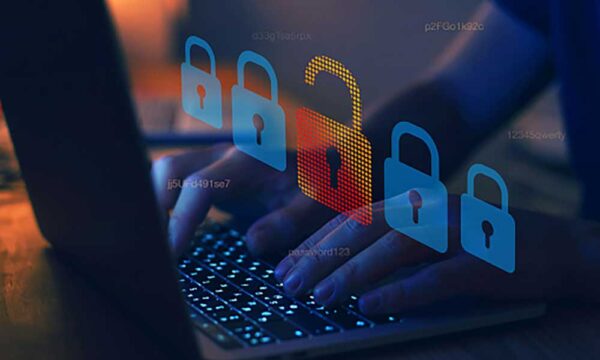Cybersecurity is bigger news than ever before. While the global pandemic has stolen the headlines for almost two years now, anyone paying attention to cybersecurity news or searching on Wiki will have noticed many figures in governments around the world sounding the alarm over the biggest cybersecurity threats. However, this danger isn’t necessarily confined to military and government systems and cybersecurity threats in healthcare. The vast majority of damage done by cyberattacks is targeted at individuals.
We’re all familiar with cybersecurity threats examples like the spam and phishing scams that show up in the average inbox. But many people are unaware of just how vulnerable the average small or medium business is to cyberattacks. Every network of employees, clients, and servers has potential breaches, and criminals are working overtime to exploit these opportunities. The following are four of the most effective steps every SMB can take to protect themselves from these threats.
Create Solid Practices and Stick to Them
The average cybersecurity analyst will tell you that probably the most effective steps a company can take to protect itself from cyber threats is to create strong policies and practices and stick to them. By ensuring that all processes within your business are in alignment with these guidelines and that all your employees stick to them, you can create solid foundations for protection.
One of the most obvious of these is a zero-trust framework. This refers to creating a system where no part can be accessed without valid credentials. This should extend to all aspects of your servers and systems, no matter how trivial they may seem.
Two-step or multi-factor authentication is a good way of implementing this. By requiring anyone accessing your system to provide two or more forms of authentication, you drastically reduce the likelihood of an outsider gaining access.
Another commonly used tool for improving security is a VPN for your business. Many people assume that VPNs are primarily used by individuals to bypass geo-restrictions or to hide their IP addresses. In reality, many businesses use VPNs because they provide an extremely high level of security. A VPN network encrypts any packages of data sent from your business IP address, making it extremely difficult for outsiders to gain access to any sensitive information you may be sending. This goes a long way to reducing potential threats. You can often find VPNs integrated into the kinds of plans cybersecurity companies put together for businesses. Investing in one of these plans is generally a good idea.
Many companies think that they can rely on their IT department to put together the protection they need, picking from a number of different necessary features.
In reality, it’s often best to use a dedicated service to create your cybersecurity protection plan. Professionals know how to integrate different features together to create a completely watertight protection system. Good cybersecurity isn’t just about having the right elements. It’s also about ensuring those elements interact with each other in the correct way. Professionals can provide you with a complete suite designed to cover every possible base.
Ensure Your Employees Are Aware of Basic Cybersecurity
A large number of examples of cybersecurity threats, unsurprisingly, come down to a company insider. But at the same time, the majority of employees involved in these breaches were completely unaware that they were opening the door to a cybersecurity threat. It’s not easy staying up to date with the latest in cybersecurity.
Hackers and criminals are constantly finding new ways to breach security, and ever more inventive ways to gain access via phishing scams. You need to be constantly working with your employees to stay a step ahead of any threats. This means keeping on top of the latest best practices regarding cybersecurity, as well as staying aware of any recent threats that have emerged around the world. It also means training your employees in best practices regarding how they use your online systems. Make sure that they are well aware of your antivirus and Firewall protocols, and any associated information on how to stay secure. And also make sure that they know who to go to as soon as they see any activity that seems suspicious.
In addition, don’t assume that once they’ve gone through a single training session, they’re ready to deal with all cyber threats. Effective training is an ongoing process, rather than a one-off. Give your employees regular updates on any news regarding new threats, or new measures you’ve put in place. You can also run occasional ‘drills’ – create a fake threat and see how employees react to it. This gives you the opportunity to find out how much they’ve learned, as well as work out what their weak spots are.
Management and Endpoint Security
It may surprise you that in this day and age, weak passwords still pose the biggest cybersecurity threats 2021 businesses face. You’d think that by this point, with years of experience and regular prompts, people would have realized the importance of a secure, unique password. But the fact still remains that many people are shortsighted and careless when it comes to setting up passwords. A weak password is an easy entry point for a cybersecurity threat, especially if you’re someone who uses the same password again and again. It’s also worth considering whether your company passwords all follow a similar template. If this is the case, all it takes is for someone to break a single password, and they can probably crack the entire company’s passwords.
There are a number of things you can do to avoid this threat. Obviously, the simplest one is educating your employees on best practices when it comes to choosing passwords or providing them with passwords that are as secure as possible. This doesn’t just apply to passwords for core elements of your computer systems. Hackers can use the most mundane object, such as a printer, to try and gain access through a so-called side door. Make sure that every part of your computer system has a secure password.
Another thing worth considering is endpoint security. This refers to things that can be protected by an integrated cybersecurity framework that monitors multiple different aspects of your computer systems at once. For instance, you can pay a cyber security salary to invest in a reliable unified threat management package that provides anti-virus software, data loss protection, intrusion monitoring, dedicated WordPress hosting, and more.
If you don’t have extensive experience setting up cybersecurity networks, investing in an entire package is probably your best bet. Integrated packages have been designed to cover every aspect of cybersecurity, and the different cybersecurity programs work together to provide comprehensive protection. Integration is far more useful than a system pieced together from different programs that may not work well with each other.
Be Ready to Respond
We’ve covered a few ways that you can reduce the risk of a cyberattack. But the reality is that no matter how much you work to increase your security, the risk is always there. That means that, in the worst-case scenario, you need to be prepared to respond to an attack.
With cyberattacks, response time is crucial. You need to plug any gaps and restore security as soon as possible, not just to prevent more data loss, but also to ensure that your company can continue functioning properly. This means drawing up a plan on how to respond, and who carries what responsibilities.
Naturally, your IT team will probably bear the brunt of the burden. But you still need an integrated plan that assesses the roles of the rest of your team. This is particularly true if there has been any kind of data breach or loss of your customers’ information. You should be ready to inform the police if necessary, and have some kind of damage limitation and plan for how to inform injured parties if necessary.
At this point, it’s also worth considering exactly what kind of data on your customers you’re retaining. By ensuring that you’re holding no more than the bare minimum, you can reduce the damage done by a security breach.
The GDPR regulations implemented in 2018 had a huge impact on how businesses retain information related to their customers. As long as you’re following these rules closely and minimizing the information you hold on to, you can ensure that the damage done by a data breach is as small as possible.
Conclusion
Cyberattacks are, sadly, a genuine threat in the world today. But as we’ve shown, even the smallest business can put itself ahead of the opposition by taking a few simple common-sense steps. Perhaps the most important message you should take away from this article is that cybersecurity is an ongoing job.
Sadly, it isn’t simply a matter of putting a few main safeguards in place. What’s needed is a security system that is constantly reassessed according to best practices, and updated regularly.
Cybercrime is a dynamic business, with criminals constantly evolving to get around the latest safeguards. As a result, your cybersecurity strategy also needs to change according to current threats. On top of that, your team needs to be kept up to date, and familiar with the latest threats.
While a large amount of cybercrime is the result of technical failures, a lot also comes down to employees not following best practices. Regular training and updates can go a long way to reducing these threats. The above are a few measures you can take to ensure that you’re as safe as possible and that you’re in the best position to respond if necessary.




Leave A Comment
You must be logged in to post a comment.